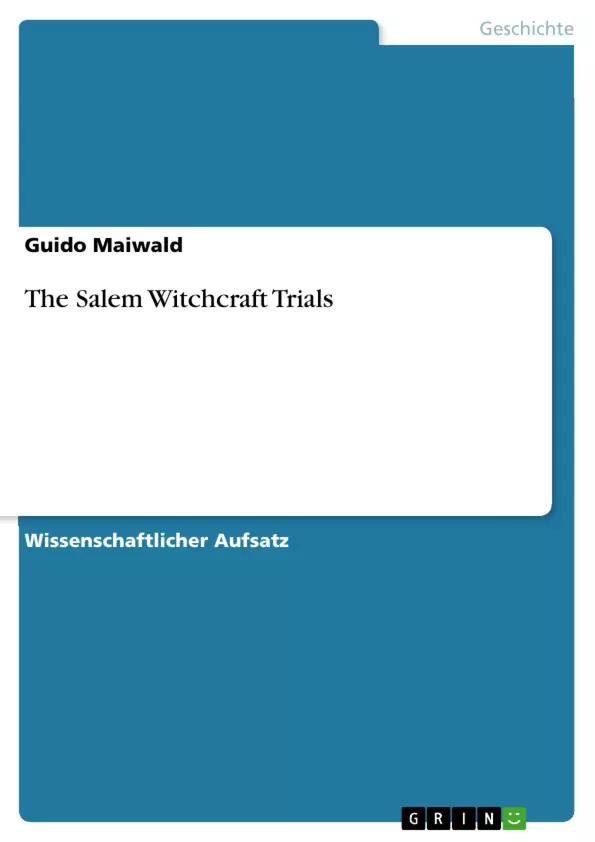The outbreak of religious bigotry in 17th century New England bothers historians, sociologists and theologians to find out where the motivation lay to accuse neighbours and finally put them to execution. This work will sum up the most important attempts to explain the causes as well as it will attempt a kind of focussing on the picture of the world as recognized by members of puritan faith. After a short summary of the events in winter 1692 I will first focus on social and economical circumstances during the second half of the seventeenth century. Chapter 3 will focus the puritan world-view and matters of discussion of theologians and philosophers. Chapter 4 sums up the accusations that were stated during the trials of Martha Carrier in 1692 as a showcase.
Table of contents
Preface
1. Chronology of events
2. The Salem setting: political and economic conditions
3. Puritan faith and religious bigotry
4. The Trial of Martha Carrier at the Court of Oyer and Terminer
4.1 The end of the trial
Conclusion
- Quote paper
- MA Guido Maiwald (Author), 2004, The Salem Witchcraft Trials, Munich, GRIN Verlag, https://www.grin.com/document/179484



